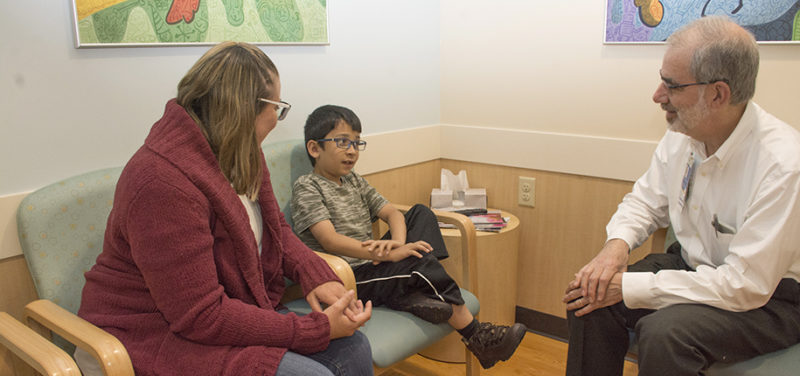
Pediatric radiologists are physicians who specialize in using imaging techniques (such as X-ray, ultrasound, CT, and MRI) to diagnose medical conditions affecting babies, children, and adolescents.
The day-to-day job involves carefully reviewing each patient’s medical history and images, comparing the images to those of prior studies, writing a report, and communicating results to the ordering doctor or nurse practitioner. Often, pediatric radiologists are involved not only in the interpretation of imaging studies, but also in determining the best imaging study for the patient to undergo. This can include conversations with the ordering clinician about the patient’s medical situation. It can also involve conversations with technologists about the specific parameters of image acquisition.
But do pediatric radiologists ever actually meet the patients that they are trying to help? People are sometimes surprised to hear that the answer is yes!
For some imaging modalities, including CT and MRI, it is uncommon for the radiologist to meet the patient. In these cases, the images and medical chart of the patient are reviewed from a reading room.
For other imaging modalities, however, the radiologist often meets the patient. This frequently happens in fluoroscopy and ultrasound.
Fluoroscopy is an imaging technique in which the body is examined in real-time using X-rays. Images can be saved as still X-ray pictures or as X-ray movies. These exams frequently require the administration of a contrast agent to opacify a portion of either the gastrointestinal tract or the genitourinary tract. The radiologist directs the administration of contrast and the positioning of the patient to obtain the best pictures possible.
For some ultrasound exams, meeting the patient and conducting the examination with the technologist can help the radiologist make an accurate diagnosis. In examinations of bumps at the skin surface, for example, this tells the radiologist the exact anatomic location of the bump. Another example is examinations of the appendix. In these cases, talking with the patient (and the patient’s family) about symptoms, physically examining the patient, and seeing the appendix and bowel in real-time can all be helpful.
Thanks largely to the prominence of fluoroscopy and ultrasound, there are many opportunities to meet patients in pediatric radiology. For many of us, this opportunity was a draw!
Dr. Joseph McCrary, author; Glenn Miñano, BFA, editor; Meredith Towbin, copy editor